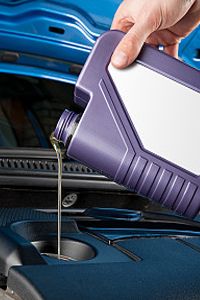Finding the correct oil for your car or truck seems like a simple job -- it all lubricates and it's all basically the same color; just pour some in your engine and go, right? Wrong.
Car and truck engines are usually designed with a specific type, viscosity, and amount of oil in mind. The oil will match the engine's close tolerances, move through the galleries in the correct way and take away heat at a measured pace. It'll also match the type of driving the car or truck is primarily used for; for instance, a daily driver will take different oil than a work truck. If you change the oil from the manufacturer standards you're changing how the oil moves and works, and those changes could lead to poor performance, engine damage or even a seized engine.
Advertisement
As engines become more sophisticated so has the oil that goes in them. Some engines call for synthetic only, some for odd weights and viscosities. Other engine systems can monitor what type of oil is in the car and set a check engine light if the type is wrong.
Despite a bewildering array of oils on the market, with various additive packages and performance standards, finding the right oil for your car is relatively easy. But finding the best oil out of the array is a little more difficult. However, puzzling out the best oil can be a benefit. Oil is what keeps the engine from premature wear, overheating and a host of other life-shortening problems. Finding good oil, not just expensive oil, is an effective tool in helping keep a car on the road longer.



